Varieties of bougainvillea and its cultivation
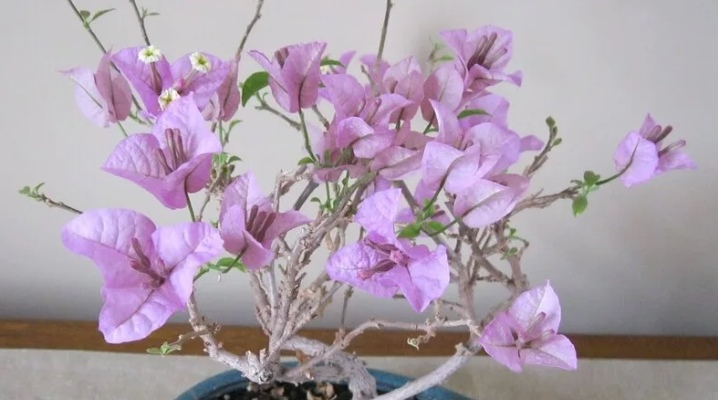
Florists decorate their homes with many beautiful flowers. Bougainvillea is very popular. Today we will talk about the features of this indoor plant.
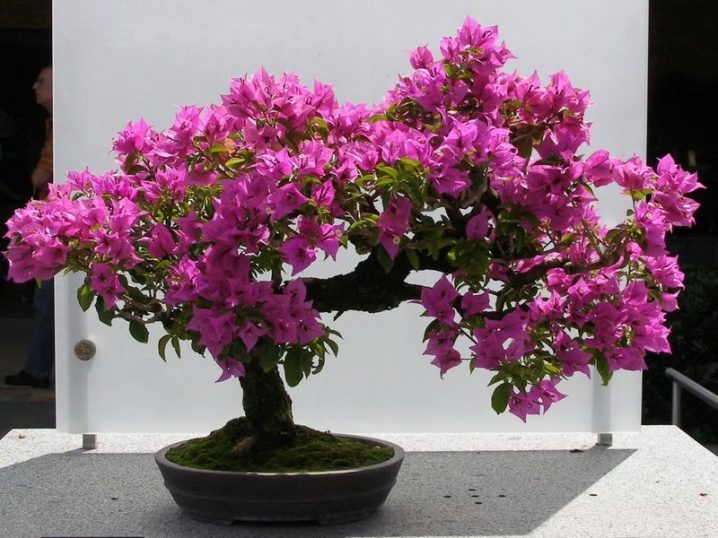
general description
Bougainvillea is a perennial plant with elongated creeping branches. The flower is tall and, with proper care, can grow to over 5 meters in height. The branches of an adult specimen begin to lignify over time, become thicker.
The trunk of the bougainvillea has a dark brown bark, which turns gray with age. The branches are spreading, on their surface you can see a large number of small thorns.
Oval-shaped leaves have a bright green color. They fold along the central vein. The shrub is covered with small single buds. The plant is distinguished by large bracts that surround the flowers themselves. The color of the flowers can be different - from snow-white to purple.
Fruits are formed by natural pollination, therefore, when growing at home on vegetation, fruits are not formed at all.
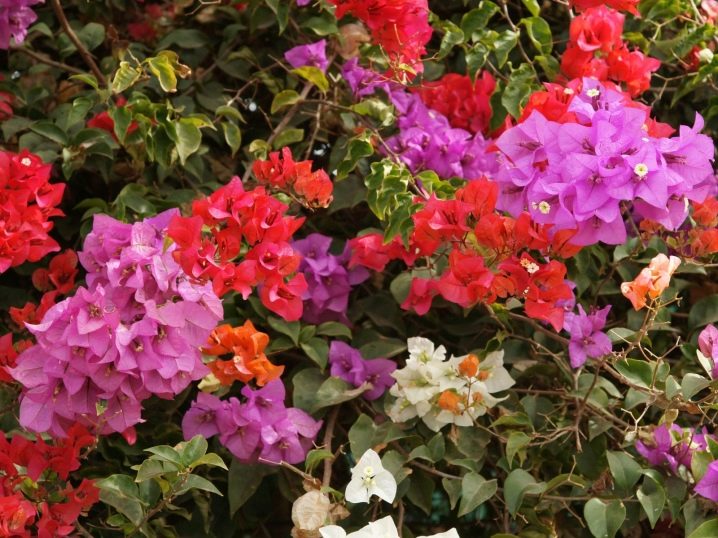
Types and varieties
Consider some individual species and varieties of bougainvillea.
- Bougainvillea nude. The variety has a bare stem without thorns. The plant is highly branched, in appearance it resembles a liana. The leaf blades are pointed, their shape is oval. Leaves are short-petiolate and whole-edged. The flowers of such bougainvillea are 3 to 5 centimeters in size. Most often they are solitary, but sometimes they gather in inflorescences of 2-3 buds. Around the flower is an orange, pink, white or yellow bracts. With age, the color becomes paler.

- Bougainvillea is wonderful. This view is very similar to the previous one. The main difference is that the marvelous bougainvillea has a large number of small thorns on the stem. This flower grows on rocky slopes.
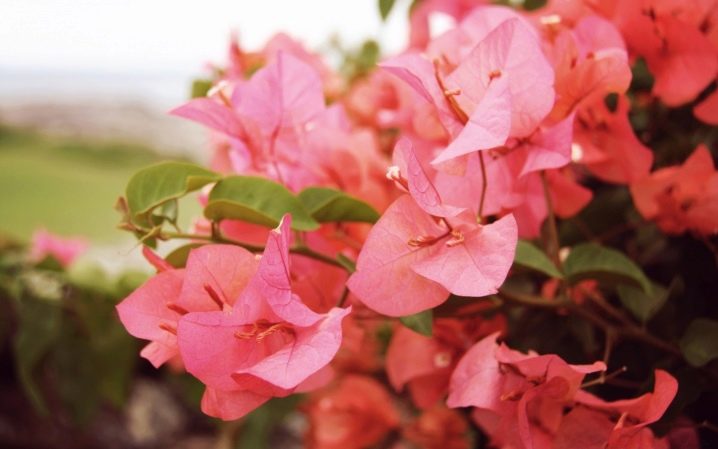
- Mini Thai. This variety is the result of selection (they crossed naked bougainvillea and Peruvian). The bracts of such a plant have a light orange or light pink color.
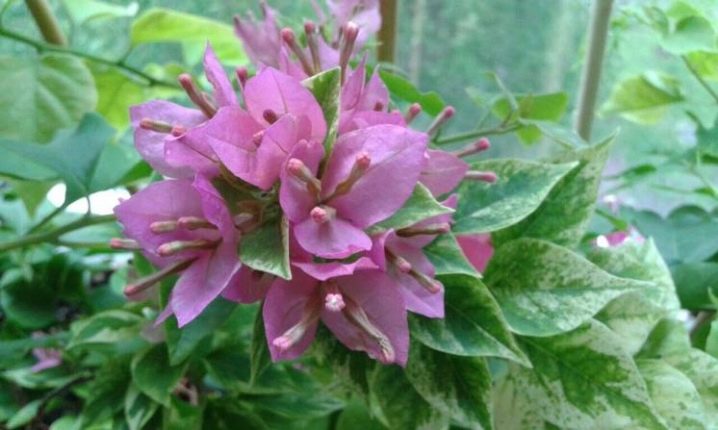
- Alexandra. This variety is considered the most thermophilic. It grows with beautiful lilac bracts and small snow-white buds that gather in racemose inflorescences. The flower can hardly tolerate even small drops in temperature. Most often, interesting compact compositions are created from such a plant by pruning.

- Double Pink. This variety is terry. It is distinguished by lush bracts, colored in various shades of pink. Their base has a green tint. They retain their rich color throughout the entire flowering period.
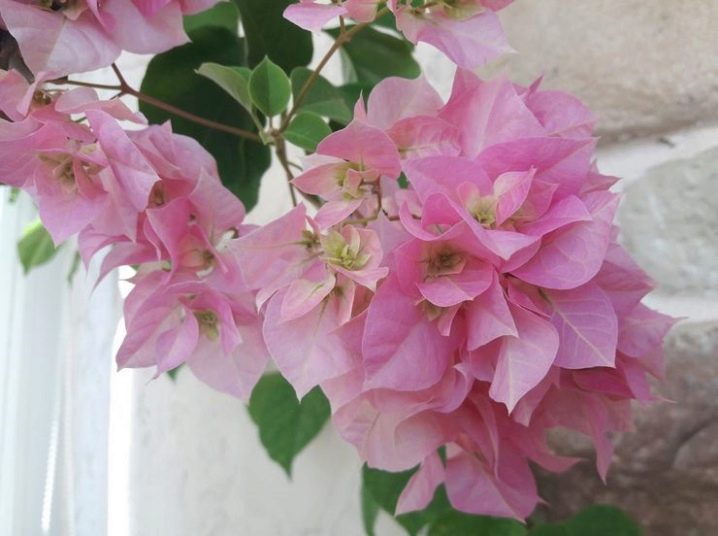
- Bougainvillea Peruvian. It looks like a strongly climbing bush. His bracts are terry, they give the plant a special decorative effect. This variety is covered with small thorns, has a small number of lateral shoots, therefore, over time, the vegetation becomes more elongated and directed upward. The leaf blades on the bush are smooth, their shape is rounded, the end is pointed. The foliage is dark green, with smooth edges. On each leaf you can see a straight central vein. With proper care, the flower will bloom several times a year.
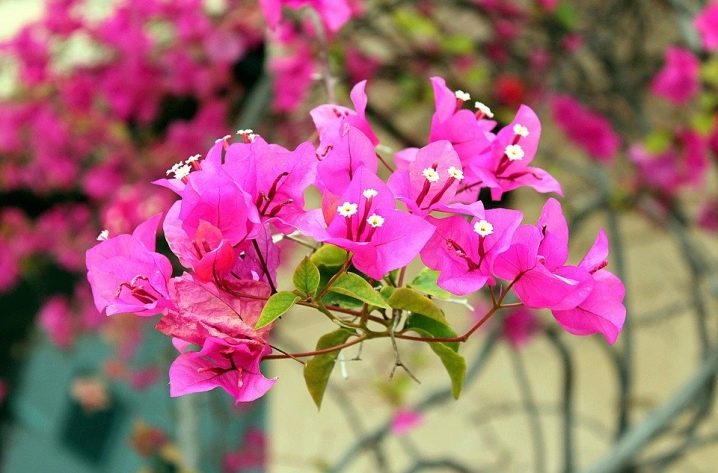
- Vera Deep Purple. This variety is hybrid. It is a compact shrub-type flower.The plant has large bracts, with abundant flowering, they cover almost the entire bush.
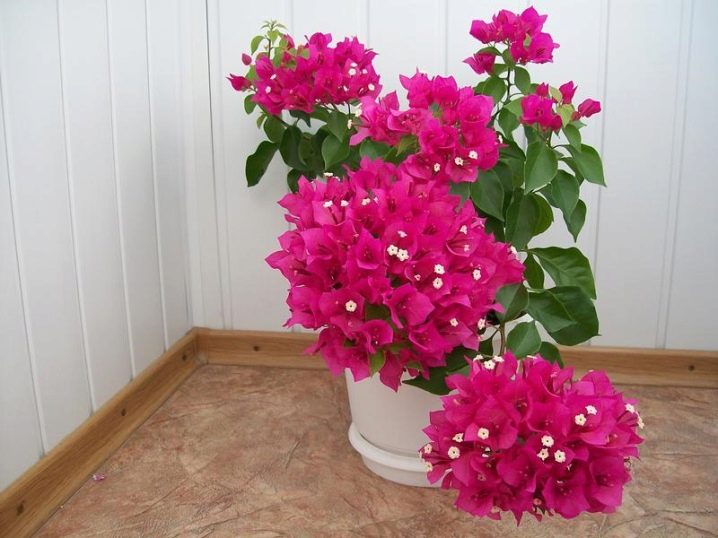
- Glabra Donker. The view is very similar to the previous one. The plant has a large number of bracts, especially at the tops of the shoots. The variety blooms throughout the year. A voluminous and fluffy bush has white simple inflorescences, bracts have a purple or pink color.
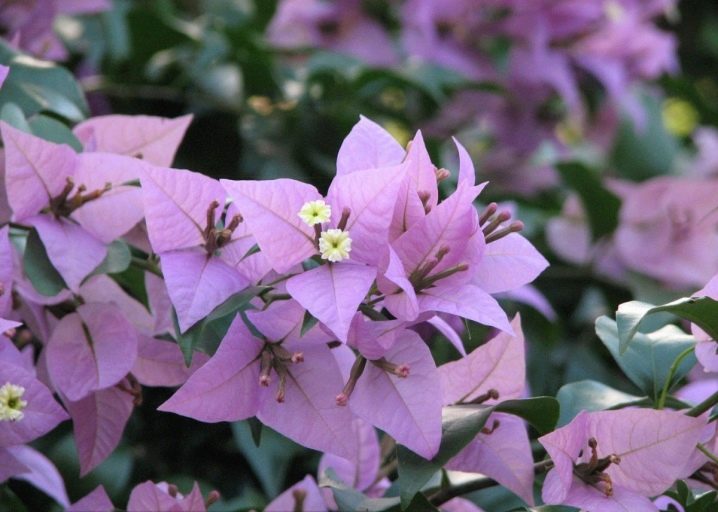
- California Gold. This variety is covered with bracts of golden or yellow color almost all part of the year. They cover almost the entire bush. This species in the process of growing will be especially badly in need of light.
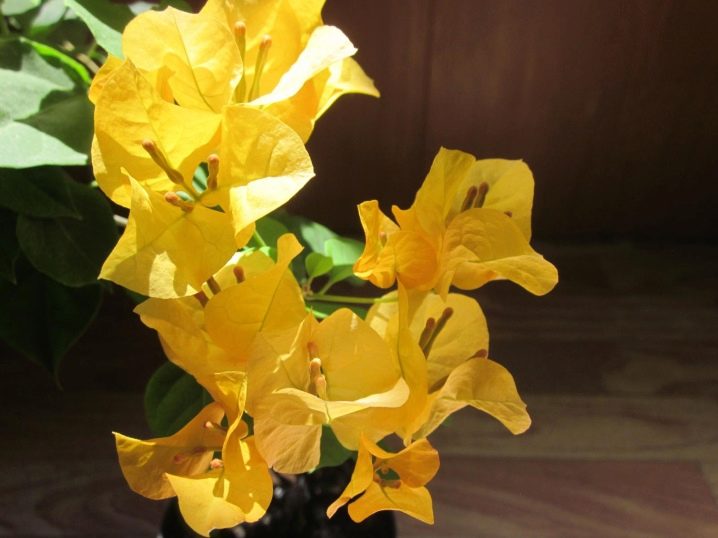
- Golden Jackpot. The plant has beautiful variegated yellow-green foliage. During flowering, a large number of lilac buds are formed on it. Golden Jackpot blooms several times a year with periodic feeding and sufficient light.
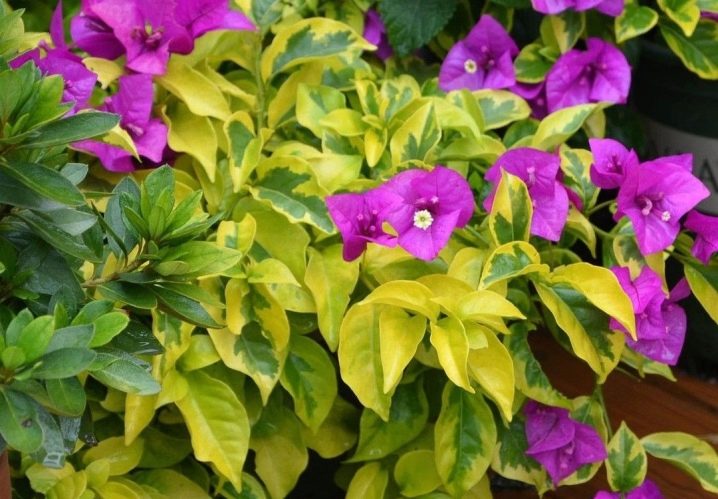
- Chitra. This variety is bicolor. It has small heart-shaped leaf blades. Their colors are green with a slight rusty sheen. The flowers are medium, white-purple, gather in inflorescences.
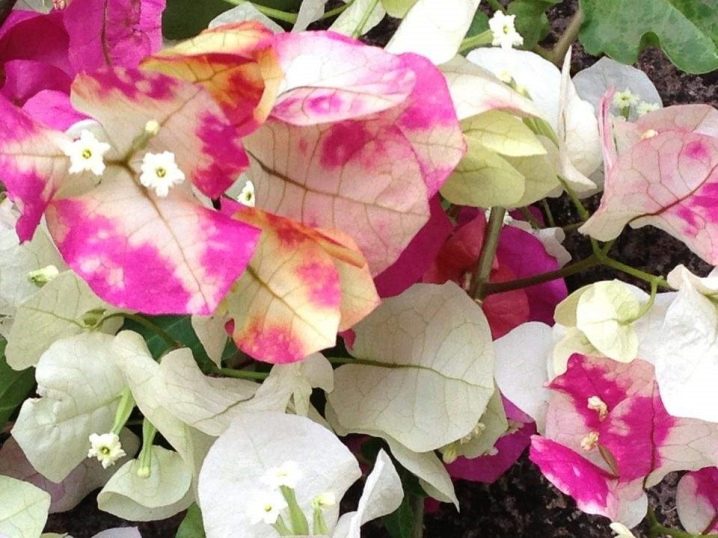
- Mary Palmer. The species is distinguished by beautiful variegated flowers of white and pink colors. The bracts are usually just pink. Leaves of deep green color with a pronounced central vein.
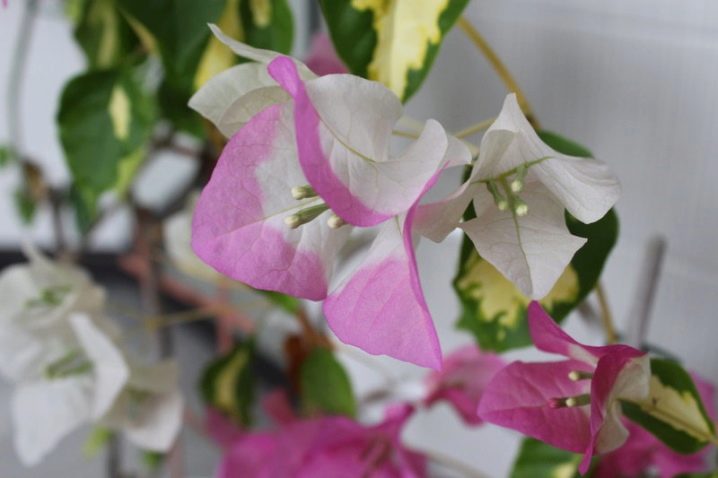
- Limberlost Beauty. The flower of this species grows with beautiful white double bracts. The central part is green. The buds form small inflorescences, with abundant flowering they acquire a pink tint.
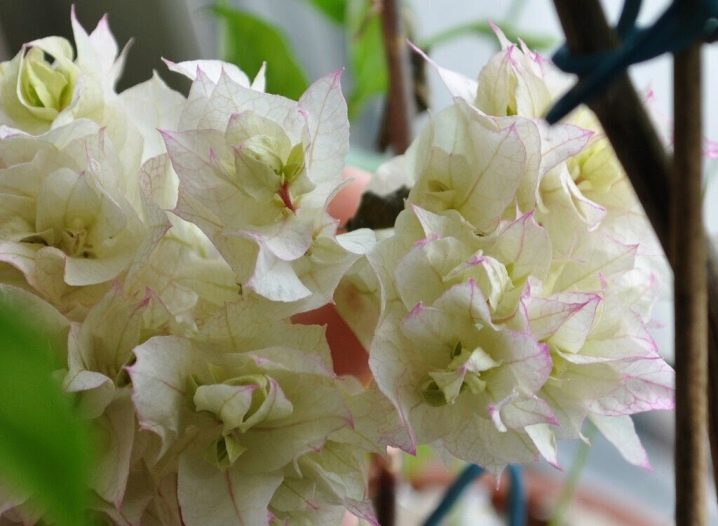
- Sanderian. This hybrid variety is distinguished by beautiful large purple bracts. They appear on the plant in mid-April. Inside them are small creamy flowers. The variety lends itself well to pruning, therefore it is quite often grown in houses and apartments. In addition, Sanderiana is considered absolutely unpretentious, sometimes used for landscaping parks and squares.

Landing
Now let's figure out how to properly plant bougainvillea.
- It is important to purchase quality seed material.
- For planting such a flower, simple pots with a volume of 2-5 liters will be the best option. In larger containers, the plant will grow more vigorously, while forming a lush green mass.
- It is also necessary to prepare the potting mix before planting. To do this, mix sod and leafy land. Sand is added there. All components must be taken in the same proportions. In any case, the soil should be loose and light. It can be neutral or slightly acidified.
- A drainage layer is formed at the bottom of each container. It is made most often from expanded clay, small stones, and foam.
- After the drainage layer, soil mixture is poured. Small seeds are carefully laid out there, they should be deepened a little. Then the whole thing is watered abundantly.
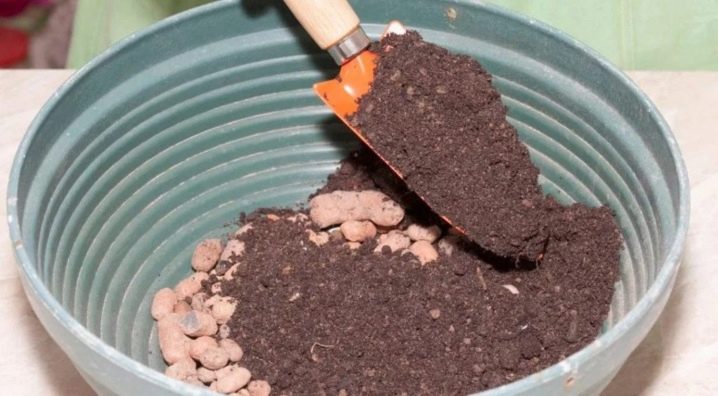
Growing care
In order for the flower to grow well, have a decorative look, timely care is needed.
Watering and feeding
The flower requires regular watering during the growing season. The soil in the container must always be moistened. But you should not allow waterlogging either. When watering, water is poured until it begins to flow through the drainage layer.
In the fall season, the amount of watering should be reduced. In winter, moisture should be minimal (once every 2-3 weeks). The colder the surrounding air, the less often the flower is moistened. If in winter bougainvillea has thrown off its foliage, then watering is completely stopped.
In order for the vegetation to be able to fully and intensively grow, it needs top dressing. From early spring to the middle of the autumn season, the flower is fed with liquid nutrient fertilizers. The best option would be ready-made compositions that contain potassium, iron and phosphorus. These substances contribute to the formation of a large number of buds, abundant flowering.
Use nitrogen fertilizers carefully. An overabundance of such an element will lead to a weakening of flowering.
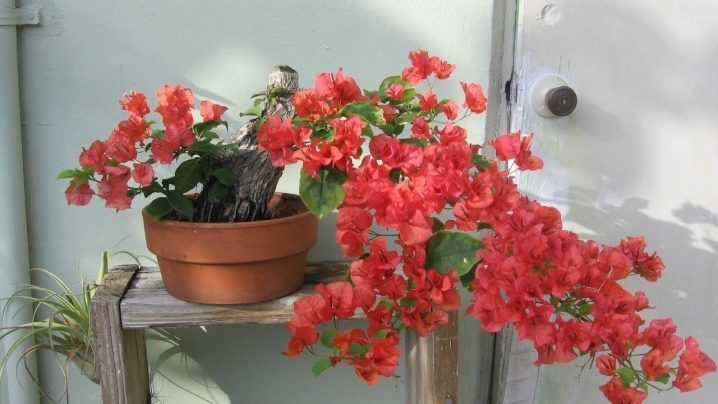
Pruning
Bougainvillea also needs pruning. It provides the decorative effect of the plant and stimulates flowering.
Pruning bougainvillea is necessary several times a year.
- In the spring, this is done to remove all dried and damaged parts.
- In the fall, the main pruning is carried out. At the same time, the shoots that have grown in the current year are sure to leave, as they will form a green mass. They only need to be shortened, each of them should have 6-7 buds. In the same period, the formation of a flower is also carried out. If desired, the plant can be given almost any shape.
- In summer, cosmetic pruning is carried out, in which affected shoots, faded buds, and bracts are removed.
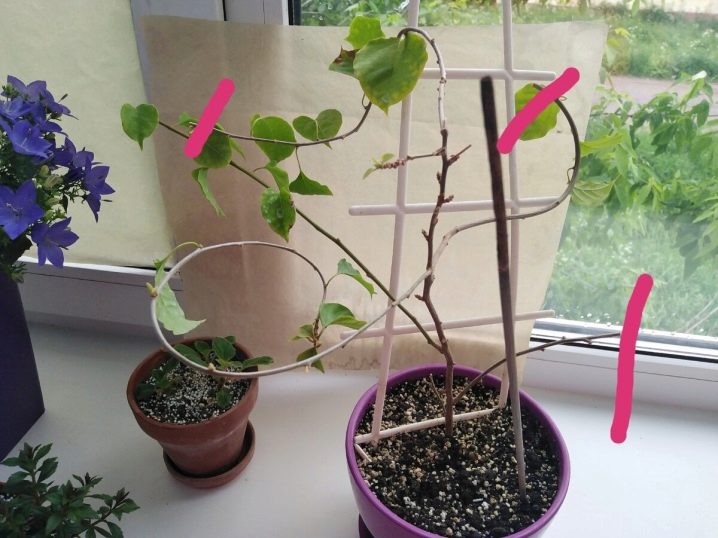
Dormant period
The dormant period in indoor plants is a special state in which physiological processes are suspended, and some of them stop altogether. At the same time, one cannot observe the visible growth of leaves and shoots, the formation of flower buds.
During the rest period, all feeding is stopped. Also at this time, the number of waterings is gradually reduced. In winter, spraying can be done instead of watering. In this case, it is better to provide the flower with a cool content. For deep rest, the soil is not moistened at all. In this case, bougainvillea pots should be placed in dark places.
As a rule, with lengthening daylight hours, vegetation begins to wake up. During this period, young leaf blades and shoots develop. Small shoots can be seen on the tubers. At this stage, watering begins to gradually increase. It is better to rearrange flower pots on the sunny side.
If bougainvillea does not wake up in any way, then they begin to periodically water it with heated water.

Transfer
This plant is difficult to tolerate a transplant. It can only be carried out by transshipment into a larger container. Moreover, the pot should be only a couple of centimeters larger than the previous one.
Young specimens should be replanted every year after dormancy. When choosing a suitable pot, it should be borne in mind that it must be quite high. Drainage holes are necessarily formed in it.
You can prepare the soil mixture for transplanting bougainvillea yourself. To do this, mix sod and leafy land in equal parts. Then a little humus and coarse sand are added to this mass.

Reproduction
Bougainwallia can be propagated in a variety of ways.
Cuttings. This method is considered to be the most common.
- In this case, the cuttings are harvested in June. For this, shoots are selected, which have already managed to woody a little. In order not to spoil the decorative appearance of the plant, only those parts that do not bloom and thicken the bush are cut into cuttings.
- For rooting, the collected material is planted in a substrate made of peat and sand. This mixture is pre-poured into plastic cups.
- The planted cuttings are covered with foil or a suitable lid. After that, all the cuts are processed with coal.
- The earth must always be kept moist. Remember that cuttings need regular hydration.
- When the stalk begins to grow, the shelter is removed.
- To help the vegetation take root better, additional lighting will come in handy.
- The stalk should root in about 5-7 days. After that, it is transplanted into a container filled with soil mixture with humus or compost. The transplant must be done as carefully as possible so as not to break the young roots. When the container is filled with roots, the bush can already be planted in a larger pot.

Air layering. The air lay method can be used all year round.
- A small container is taken, filled with moistened earth and placed next to the mother bush, on which one strong and healthy shoot is chosen, which has not had time to lignify. Small scratches are made in the places where rooting should be.
- Further, the shoot is bent to the soil surface in a container.Make sure the scratched area touches the ground.
- When the cuttings grow their roots, it is separated from the parent plant and planted.
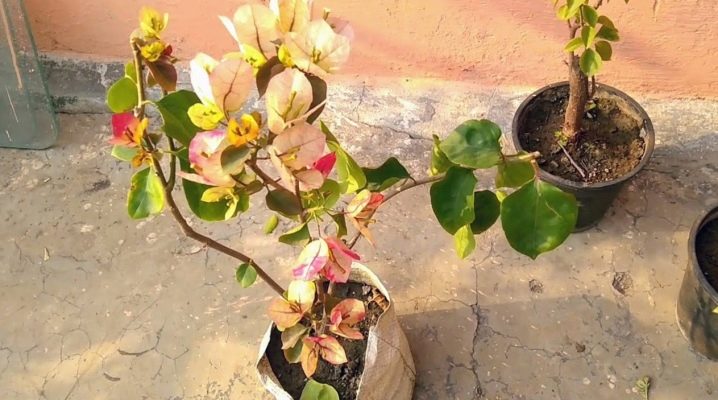
Seeds. Growing seed at home is quite difficult due to the lack of insects. It will take a long time to get it. Sowing is carried out from the end of February to the second half of April.
- First, a fertile soil mixture is prepared: sand, leafy soil and peat are mixed in equal proportions. You can take a ready-made mass for flowers. You should also prepare containers in advance.
- For seedlings to appear faster, they need to be placed in a warm place.
- It will be necessary to regularly ventilate and moisten them with a spray bottle.
- Also, seedlings will need a lot of light.
The first seedlings are formed after 7-10 weeks.
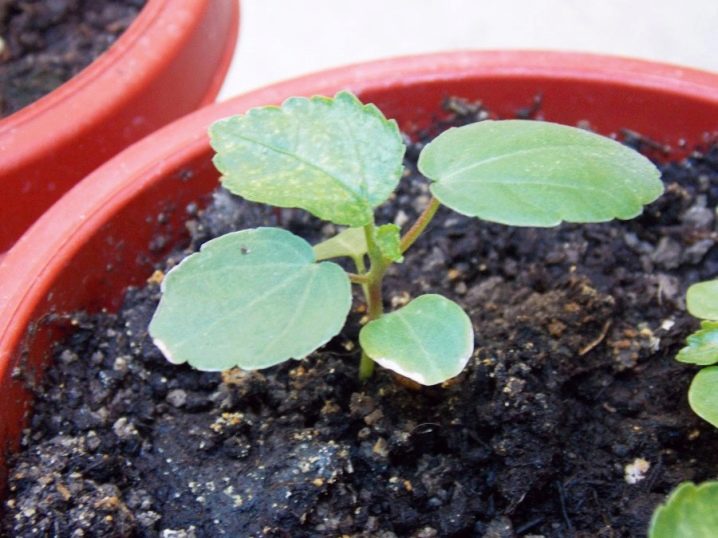
Diseases and pests
Bougainvillea can be affected by chlorosis. This disease develops due to iron deficiency. When infected, the foliage becomes too light in color, some areas may turn yellow. To cure plants, you should use foliar dressing, which contains iron.
Also, various parasites can appear on the vegetation.
- Felter. When this insect appears, a white bloom forms on the surface of the leaves. The flower begins to develop slowly. To get rid of the pest, you can use simple folk remedies. The best option would be an alcohol solution. Also, a tincture based on tobacco dust, garlic, and calendula is often used. If the plant has a large number of insects, then it is better to carry out the treatment with chemicals (Fitoverm, Aktellik).
- Aphid. This harmful insect forms small sticky spots on the leaves. Over time, foliage begins to curl, buds and shoots wither. Aphids settle on a flower in whole colonies. To combat the pest, folk remedies can be used (tinctures with wormwood, with tobacco dust, wood ash, crushed household soap), you can also immediately use chemical preparations (Fitoverm, Decis, sulfur powders).
- Spider mite. When this pest appears, a thin web appears on the leaf blades. Later, they begin to turn yellow and fall off. The development of flowers is greatly slowed down. To destroy the spider mite, use sulfur powders, "Actellik" and "Fitoverm".
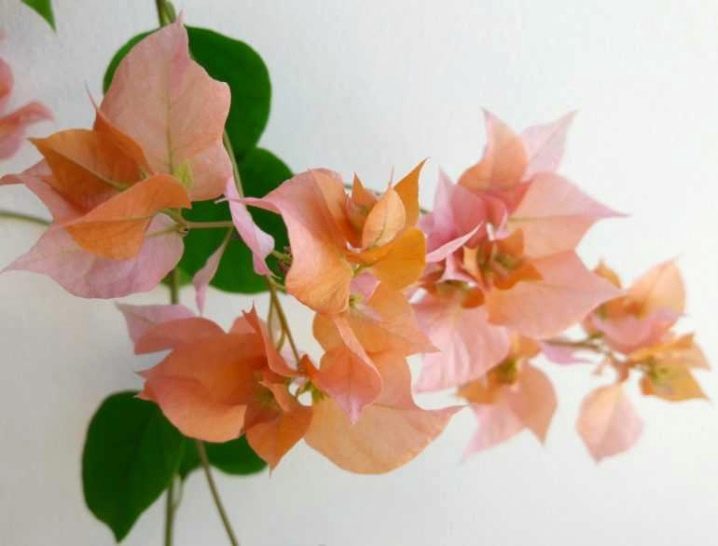

























The comment was sent successfully.